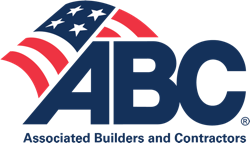(Keep Colorado Construction Competitive debunks union bannering myths)
Myth: If a construction union “banners” a construction firm, it means the targeted firm is a bad contractor.
Fact: Bannering is one of several tactics used by construction labor unions to pressure project owners into using union labor. The construction unions try to generate negative publicity for project owners by claiming that the contractors on their project(s) do not adhere to area standards for worker wages and/or benefits. The desired outcome is to bully construction project owners into abandoning their contracts with nonunion construction firms and using construction firms that are a party to a collective bargaining agreement on all future projects.
Myth: Union banners are accurate. If unions are bannering the project, then there must be a labor dispute and workers are not being paid fair wages.
Fact: Union claims during a bannering campaign typically are not supported by facts. In many cases, union bosses demand wage and benefit data from nonunion contractors; however these contractors are under no legal obligation to provide this data to any third party – including construction union officials. When a nonunion contractor refuses to open their books to the unions, the union interprets this refusal as an indication that the contractor is not paying area standard wages – i.e. union-scale wages – and has something to hide. Even this limited evidence is enough to spark a union assault on a good contractor’s reputation. Bannering campaigns are not designed to improve workers’ wages and benefits, but instead clearly are aimed at ruining the reputations of construction project owners and nonunion contractors in order to create more opportunities for union workers.
Myth: Unions hire local out-of-work construction workers to stand outside a contractor’s jobsite and hold the banners.
Fact: The people hired to hold the union banner typically are not construction union members. Construction unions almost always hire hourly workers and frequently employ homeless people to stand with the banners. The workers are often paid extremely low wages and receive no benefits, including health insurance. The result is that many of these most vulnerable Americans are exploited in an attempt to pressure construction owners into using uncompetitive union contractors that pay their workers inflated union wages. Ultimately, the people holding the banner are the ones left without an opportunity for advancement or a family-sustaining job with the union.
Myth: A union bannering campaign will either result in construction delays or negative media attention for the owner and other contractors involved with the project.
Fact: Union pressure campaigns, like bannering, rarely result in construction delays. Many contractors are equipped to handle union bannering campaigns and other attempts to disrupt their business. In addition, while bannering may be lawful in many cases, blocking the access or egress of the public or workers is not. The banner should not disrupt traffic flow, present public safety issues due to decreased sight lines or redirect foot traffic, and should not intimidate the public. If it does, police should be called to address any hazards to the public. While many project owners and contractors have concerns about attracting media attention to union bannering efforts, local television and print media outlets are valuable allies for exposing Big Labor’s misrepresentation of qualified contractors and their workers.

